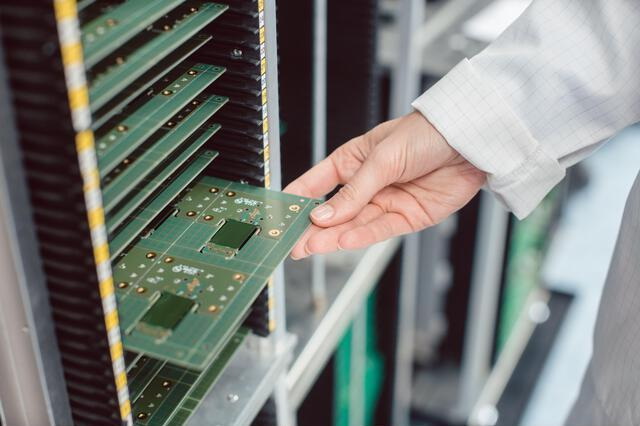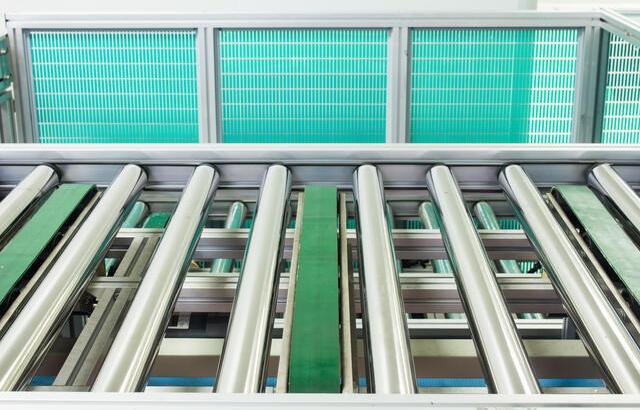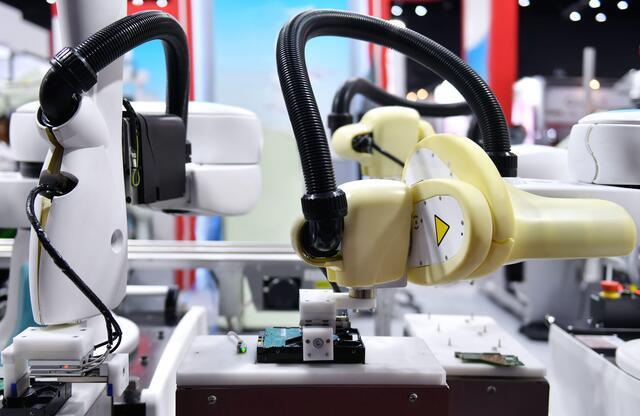Content Menu
● Understanding SMT PCB Unloaders
● Key Factors to Consider When Choosing an SMT PCB Unloader
>> 1. Compatibility with PCB Sizes and Magazine Types
>> 2. Handling and Protection Features
>> 3. Automation and Control Systems
>> 4. Integration with Production Line Equipment
>> 5. Throughput and Cycle Time
>> 6. Durability and Build Quality
>> 7. Safety Features
● Types of SMT PCB Unloaders
>> Single-Rail vs. Dual-Rail Unloaders
>> Magazine Type Unloaders
>> Stacker Unloaders
● Additional Features to Look For
>> Adjustable Width and Length
>> Anti-Jammed and Foolproof Functions
>> Customizable Supports
>> Frequency Conversion Lifting
● Benefits of Investing in the Right SMT PCB Unloader
● Conclusion
● FAQ
>> 1. What is an SMT PCB unloader, and why is it important?
>> 2. How do I know if an SMT PCB unloader is compatible with my PCB sizes?
>> 3. Can SMT PCB unloaders integrate with existing production lines?
>> 4. What safety features should I look for in an SMT PCB unloader?
>> 5. How fast can SMT PCB unloaders operate?
In the fast-paced world of electronics manufacturing, efficiency and precision in handling printed circuit boards (PCBs) are paramount. An SMT PCB unloader plays a crucial role in automating the unloading process of PCBs from production lines, ensuring smooth workflow and minimizing damage to delicate components. Choosing the right SMT PCB unloader tailored to your specific production requirements can significantly enhance productivity and reduce operational costs. This comprehensive guide will walk you through the essential factors to consider when selecting an SMT PCB unloader, highlighting key features, types, and integration capabilities.

Understanding SMT PCB Unloaders
An SMT PCB unloader is a specialized machine designed to automate the removal of PCBs from SMT (Surface Mount Technology) production lines after processes such as soldering, placement, or inspection. It ensures gentle handling, accurate positioning, and efficient unloading, which are vital for maintaining the quality and throughput of electronic assemblies.
The SMT PCB unloader typically works in tandem with other SMT equipment, such as pick-and-place machines, reflow ovens, and inspection systems. Its primary function is to transfer finished or semi-finished PCBs from the production line into magazines, trays, or stackers for further processing or packaging. This automation reduces manual labor, lowers the risk of human error, and speeds up the production cycle.
Key Factors to Consider When Choosing an SMT PCB Unloader
1. Compatibility with PCB Sizes and Magazine Types
One of the most critical considerations when selecting an SMT PCB unloader is its compatibility with the size and type of PCBs you manufacture. PCBs come in various shapes and sizes, ranging from small, compact boards used in consumer electronics to large, complex boards used in industrial applications.
An ideal SMT PCB unloader should support a wide range of PCB dimensions. For example, machines like the Hayawin YS-ULD series support minimum board sizes of 80×50mm and maximum sizes up to 530×460mm, with magazine sizes tailored accordingly. This flexibility allows manufacturers to handle different product lines without needing multiple unloaders.
Additionally, the unloader should be compatible with the magazine types used in your production line. Magazine-based unloading ensures that PCBs are securely held during transfer, minimizing the risk of damage. Check whether the unloader supports standard magazine sizes or if it can be customized to fit your specific magazine design.
2. Handling and Protection Features
The handling mechanism of an SMT PCB unloader is vital for protecting sensitive components from damage during unloading. PCBs often have fragile surface-mounted components that can be easily dislodged or damaged by rough handling.
Look for unloaders equipped with gentle conveyor systems and pneumatic clamps that securely hold magazines and boards without applying excessive force. Advanced machines use servo motor-driven lifting mechanisms with precision ball screws, ensuring lifting accuracy within ±0.1mm. This precision prevents misalignment and reduces the risk of jamming.
Anti-jamming and foolproof functions are also important. These features detect and correct potential issues during unloading, such as misfeeds or board misplacement, reducing downtime and improving overall line efficiency.
3. Automation and Control Systems
Modern SMT PCB unloaders are equipped with sophisticated automation and control systems to enhance usability and integration. A PLC (Programmable Logic Controller) combined with a user-friendly touch screen interface allows operators to easily adjust parameters such as unloading speed, direction (left-to-right or right-to-left), and pitch settings (e.g., 10, 20, 30, 40mm).
These control systems enable quick changeovers between different PCB types and sizes, reducing setup time and increasing line flexibility. Some unloaders also feature real-time monitoring and diagnostic capabilities, allowing maintenance teams to quickly identify and resolve issues.
4. Integration with Production Line Equipment
Seamless integration with existing SMT production lines is essential for maintaining continuous and efficient manufacturing. SMT PCB unloaders should support standard communication protocols and interfaces, such as SMEMA (Surface Mount Equipment Manufacturers Association) standards, to connect easily with upstream and downstream equipment.
Consider the physical footprint of the unloader and how it fits within your production line layout. Space constraints may require compact designs or modular configurations. Additionally, ensure that the unloader's cycle time matches the throughput of other line equipment to prevent bottlenecks.
5. Throughput and Cycle Time
The speed at which an SMT PCB unloader operates directly impacts overall production efficiency. Typical cycle times for unloading a single PCB range from 8 to 9 seconds, but some models offer adjustable speeds to better align with your production demands.
Evaluate your line's throughput requirements carefully. For high-volume manufacturing, selecting an unloader capable of faster cycle times or dual-track processing can significantly boost productivity.
6. Durability and Build Quality
An SMT PCB unloader must withstand the rigors of continuous operation in an industrial environment. Machines constructed with high-strength iron plates, aviation aluminum profiles, and precision components offer enhanced durability and stability.
Features such as stable casting lifting tables and reinforced frames help minimize vibrations and mechanical wear, ensuring consistent performance and reducing maintenance needs.
7. Safety Features
Safety is a critical aspect of any automated equipment. SMT PCB unloaders should be equipped with safety door locks, emergency stop buttons, interlocking systems, and sensors that detect obstructions or operator presence.
These features protect both personnel and PCBs from accidents or damage, promoting a safer working environment and reducing liability risks.

Types of SMT PCB Unloaders
Single-Rail vs. Dual-Rail Unloaders
- Single-Rail Unloaders: These machines handle one PCB track and are suitable for smaller or less complex production lines. They are typically more compact and cost-effective but may limit throughput.
- Dual-Rail Unloaders: Designed to process two PCB tracks simultaneously, dual-rail unloaders effectively double unloading capacity. They are ideal for high-volume manufacturing environments where maximizing throughput is essential.
Magazine Type Unloaders
Magazine unloaders handle PCBs stored in magazines, providing stable and accurate unloading with pneumatic clamps and servo-driven lifting systems. This design is particularly useful for lines that rely on magazine-based PCB transportation, ensuring secure handling and minimizing the risk of board damage.
Stacker Unloaders
Stacker unloaders collect PCBs in stacks after unloading, facilitating automated packaging, inspection, or storage processes. By reducing manual handling, stacker unloaders improve line automation and help maintain product quality.
Additional Features to Look For
Adjustable Width and Length
Production lines often handle multiple PCB sizes. An SMT PCB unloader with adjustable width and length settings allows you to accommodate various board dimensions without needing multiple machines, improving flexibility and reducing capital expenditure.
Anti-Jammed and Foolproof Functions
Unloading errors such as jamming or misfeeds can cause significant downtime. Machines equipped with sensors and intelligent control algorithms can detect and resolve these issues automatically, ensuring smooth operation and minimizing production interruptions.
Customizable Supports
Different PCBs vary in thickness and weight. Unloaders with customizable support systems can securely hold boards of varying specifications, preventing damage and ensuring consistent unloading quality.
Frequency Conversion Lifting
Frequency conversion lifting mechanisms provide smooth, precise vertical movement of PCBs during unloading. This feature reduces mechanical stress on components and enhances the overall reliability of the unloading process.
Benefits of Investing in the Right SMT PCB Unloader
- Enhanced Productivity: Automating the unloading process reduces cycle times and labor costs, increasing overall line efficiency.
- Improved PCB Quality: Gentle handling mechanisms minimize the risk of damage to sensitive components, ensuring high-quality output.
- Seamless Line Integration: SMEMA compatibility and advanced control systems enable smooth communication and synchronization with other SMT equipment.
- Operational Flexibility: Adjustable parameters and support for various PCB sizes and magazine types allow manufacturers to adapt quickly to changing production needs.
- Long-Term Reliability: Durable construction and advanced automation reduce maintenance requirements and downtime, improving return on investment.
Conclusion
Selecting the right SMT PCB unloader is a critical decision that impacts the efficiency, quality, and profitability of your SMT production line. By carefully considering factors such as PCB size compatibility, handling features, automation controls, integration capabilities, and build quality, you can choose a machine that meets your specific manufacturing needs.
Investing in a high-quality SMT PCB unloader not only streamlines your production but also safeguards your valuable PCBs, ensuring consistent output and customer satisfaction. With the right unloader, your SMT line will achieve higher throughput, reduced labor costs, and improved product quality, positioning your business for long-term success in the competitive electronics manufacturing industry.

FAQ
1. What is an SMT PCB unloader, and why is it important?
An SMT PCB unloader is a machine that automates the removal of PCBs from SMT production lines, ensuring efficient, precise, and damage-free unloading, which is vital for maintaining production flow and PCB quality.
2. How do I know if an SMT PCB unloader is compatible with my PCB sizes?
Check the machine's specifications for minimum and maximum PCB dimensions and magazine sizes. Machines like the Hayawin YS-ULD series support boards from 80×50mm up to 530×460mm, accommodating a wide range of sizes.
3. Can SMT PCB unloaders integrate with existing production lines?
Yes, most modern SMT PCB unloaders feature standard SMEMA interfaces and PLC control systems, allowing seamless integration with upstream and downstream equipment for continuous production.
4. What safety features should I look for in an SMT PCB unloader?
Look for safety door locks, emergency stop buttons, interlocking systems, and sensors that detect obstructions to protect operators and prevent damage to PCBs during unloading.
5. How fast can SMT PCB unloaders operate?
Typical cycle times are around 8 to 9 seconds per PCB, though some models offer customizable speeds to match specific production requirements.




















